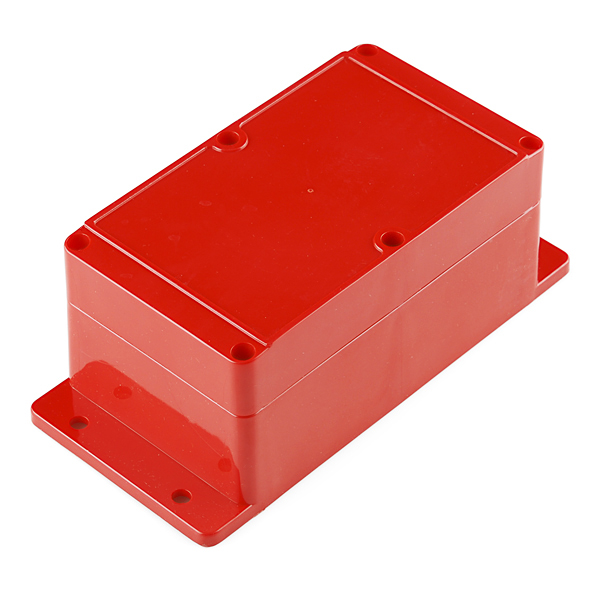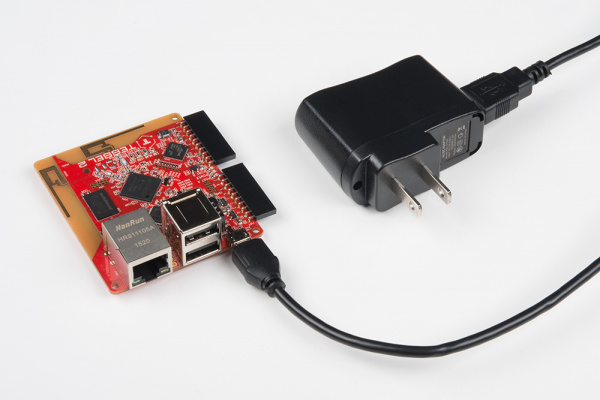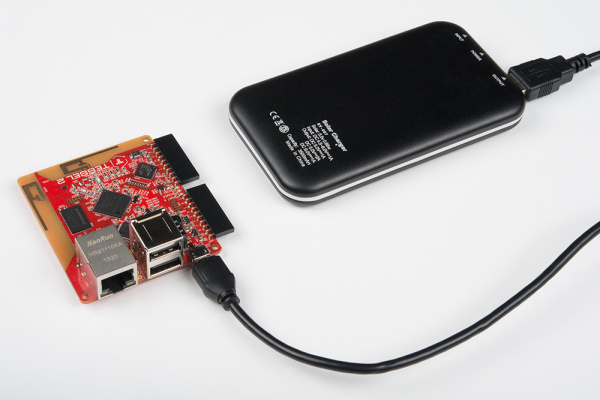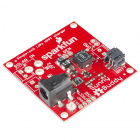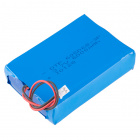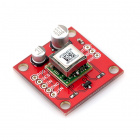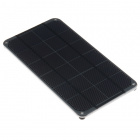Logging Data to Google Sheets with the Tessel 2
Final Touches
There are a number of things still to cover in terms of deploying this project. Here are a few thoughts that we have found work well for the Tessel 2.
Enclosures
If you are going to put this project outside for any length of time, you will need some sort of weatherproof enclosure so that you don't leave the Tessel and the circuits you built in the elements (nothing good will come of that).
We have built a number of projects with the Tessel that use our Big Red Box enclosure. It has plenty of room, has a gasket edge and is weatherproof. It has plenty of space for the Tessel, a breadboard and batteries.
If you are in a hurry, or if you are going to be leaving the project outside for a shorter period of time, a Ziploc bag or Tupperware container works really well as a makeshift enclosure.
Powering Your Project
Powering a remote project is always tricky and probably the most difficult hurdle to overcome. Your easiest way to power the project is from a 5V USB wall adapter plugged into an outdoor power outlet, if you have one nearby. This will give it a consistent power supply as long as there is power to the outlet.
Your next option in terms of simplicity is a consumer USB LiPo rechargeable battery. These are becoming cheaper and cheaper these days, to the point where we find them as give-aways at events and in gift bags. The larger the battery in terms of milliamp hours, the better!
Probably the most technical way of running this project long term would be to build a LiPo battery solar charging system with a 5V DC/DC converter, a sunny buddy and a good-sized LiPo battery and solar panel, but that may be for another day and another tutorial. ;)
